- Back to Home »
- Snowden -- facts, fictions and fears
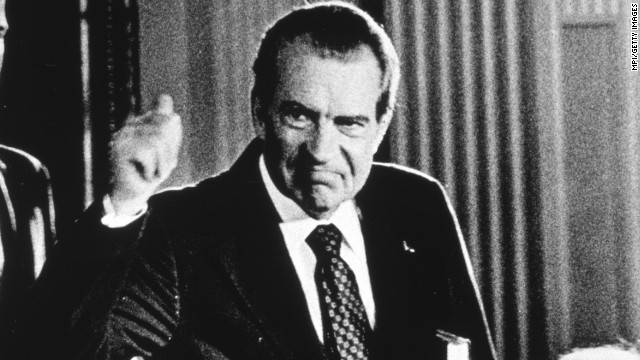 Some did it for the money, some did it for idealism, others didn't do it at all. The U.S. has seen a number of high profile leak scandals including the Pentagon Papers during the administration of President Richard Nixon. Click through to see more high-profile intelligence leaking cases.
Some did it for the money, some did it for idealism, others didn't do it at all. The U.S. has seen a number of high profile leak scandals including the Pentagon Papers during the administration of President Richard Nixon. Click through to see more high-profile intelligence leaking cases. 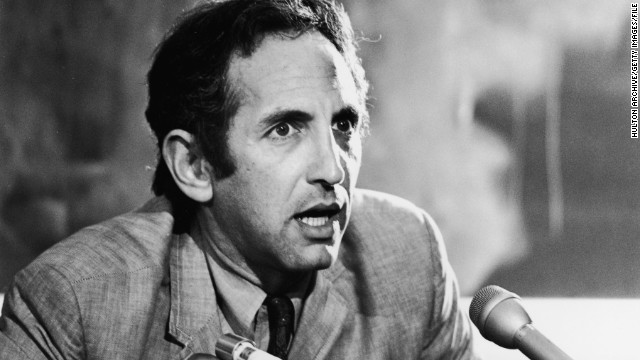 Military analyst Daniel Ellsberg leaked the 7,000-page Pentagon Papers in 1971. The top-secret documents revealed that senior American leaders, including three presidents, knew the Vietnam War was an unwinnable, tragic quagmire. Further, they showed that the government had lied to Congress and the public about the progress of the war. Ellsberg surrendered to authorities and was charged as a spy. During his trial, the court learned that President Richard Nixon's administration had embarked on a campaign to discredit Ellsberg, illegally wiretapping him and breaking into his psychiatrist's office. All charges against him were dropped. Since then he has lived a relatively quiet life as a respected author and lecturer.
Military analyst Daniel Ellsberg leaked the 7,000-page Pentagon Papers in 1971. The top-secret documents revealed that senior American leaders, including three presidents, knew the Vietnam War was an unwinnable, tragic quagmire. Further, they showed that the government had lied to Congress and the public about the progress of the war. Ellsberg surrendered to authorities and was charged as a spy. During his trial, the court learned that President Richard Nixon's administration had embarked on a campaign to discredit Ellsberg, illegally wiretapping him and breaking into his psychiatrist's office. All charges against him were dropped. Since then he has lived a relatively quiet life as a respected author and lecturer. 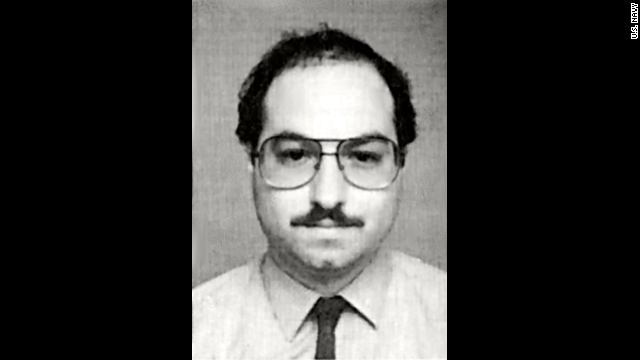 Jonathan Pollard is a divisive figure in U.S.-Israel relations. The former U.S. Navy intelligence analyst was caught spying for Israel in 1985 and was sentenced in 1987 to life imprisonment. Israeli Prime Minister Benjamin Netanyahu has publicly called for President Barack Obama to release Pollard after Pollard's wife appealed to Netanyahu.
Jonathan Pollard is a divisive figure in U.S.-Israel relations. The former U.S. Navy intelligence analyst was caught spying for Israel in 1985 and was sentenced in 1987 to life imprisonment. Israeli Prime Minister Benjamin Netanyahu has publicly called for President Barack Obama to release Pollard after Pollard's wife appealed to Netanyahu.  Wen Ho Lee was a scientist at the Los Alamos Laboratory in New Mexico who was charged with 59 counts of downloading classified information onto computer tapes and passing it to China. Lee eventually agreed to plead guilty to a since count of mishandling classified information after prosecutors deemed their case to be too weak. He was released after nine months in solitary confinement. Lee later received a $1.6 million in separate settlements with the government and five news agencies after he sued them, accusing the government of leaking damaging information about him to the media.
Wen Ho Lee was a scientist at the Los Alamos Laboratory in New Mexico who was charged with 59 counts of downloading classified information onto computer tapes and passing it to China. Lee eventually agreed to plead guilty to a since count of mishandling classified information after prosecutors deemed their case to be too weak. He was released after nine months in solitary confinement. Lee later received a $1.6 million in separate settlements with the government and five news agencies after he sued them, accusing the government of leaking damaging information about him to the media.  Members of the Bush administration were accused retaliating against Valerie Plame, pictured, by blowing her cover in 2003 as a U.S. intelligence operative, after her husband, former Ambassador Joe Wilson, wrote a series of New York Times op-eds questioning the basis of certain facts the administration used to make the argument to go to war in Iraq.
Members of the Bush administration were accused retaliating against Valerie Plame, pictured, by blowing her cover in 2003 as a U.S. intelligence operative, after her husband, former Ambassador Joe Wilson, wrote a series of New York Times op-eds questioning the basis of certain facts the administration used to make the argument to go to war in Iraq. 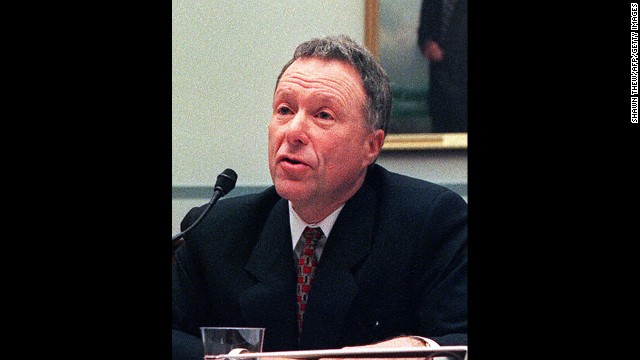 In 2007, Lewis "Scooter" Libby, Vice President Dick Cheney's former chief of staff, was convicted on charges related to the leak of the identity of CIA operative Valerie Plame. Libby was convicted of obstruction of justice and perjury in connection with the case. His 30-month sentence was commuted by President George W. Bush. Cheney told a special prosecutor in 2004 that he had no idea who leaked the information.
In 2007, Lewis "Scooter" Libby, Vice President Dick Cheney's former chief of staff, was convicted on charges related to the leak of the identity of CIA operative Valerie Plame. Libby was convicted of obstruction of justice and perjury in connection with the case. His 30-month sentence was commuted by President George W. Bush. Cheney told a special prosecutor in 2004 that he had no idea who leaked the information. 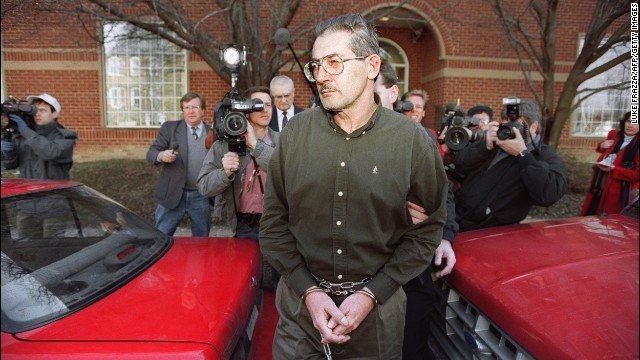 Aldrich Ames, a 31-year CIA employee, pleaded guilty to espionage charges in 1994 and was sentenced to life in prison. Ames was a CIA case worker who specialized in Soviet intelligence services and had been passing classified information to the KGB since 1985. U.S. intelligence officials believe that information passed along by Ames led to the arrest and execution of Russian officials they had recruited to spy for them.
Aldrich Ames, a 31-year CIA employee, pleaded guilty to espionage charges in 1994 and was sentenced to life in prison. Ames was a CIA case worker who specialized in Soviet intelligence services and had been passing classified information to the KGB since 1985. U.S. intelligence officials believe that information passed along by Ames led to the arrest and execution of Russian officials they had recruited to spy for them. 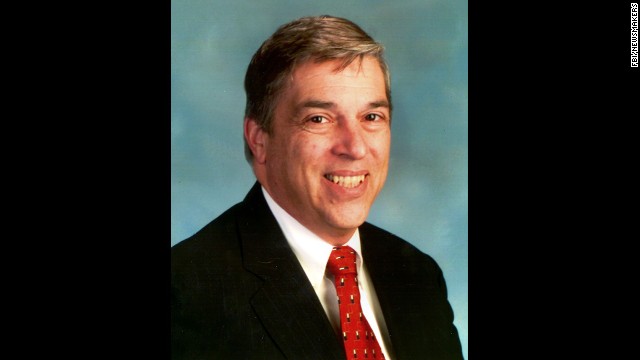 Robert Hanssen pleaded guilty to espionage charges in 2001 in return for the government not seeking the death penalty. Hanssen began spying for the Soviet Union in 1979, three years after going to work for the FBI and prosecutors said he collected $1.4 million for the information he turned over to the Cold War enemy. In 1981, Hanssen's wife caught him with classified documents and convinced him to stop spying, but he started passing secrets to the Soviets again four years later. In 1991, he broke off relations with the KGB, but resumed his espionage career in 1999, this time with the Russian Intelligence Service. He was arrested after making a drop in a Virginia park in 2001.
Robert Hanssen pleaded guilty to espionage charges in 2001 in return for the government not seeking the death penalty. Hanssen began spying for the Soviet Union in 1979, three years after going to work for the FBI and prosecutors said he collected $1.4 million for the information he turned over to the Cold War enemy. In 1981, Hanssen's wife caught him with classified documents and convinced him to stop spying, but he started passing secrets to the Soviets again four years later. In 1991, he broke off relations with the KGB, but resumed his espionage career in 1999, this time with the Russian Intelligence Service. He was arrested after making a drop in a Virginia park in 2001.  John Walker ran a father and son spy ring, passing classified material to the Soviet Union from 1967 to 1985. Walker was a Navy communication specialist with financial difficulties when he walked into the Soviet Embassy and sold a piece of cyphering equipment. Navy and Defense officials said that Walker enabled the Soviet Union to unscramble military communications and pinpoint the location of U.S. submarines at all times. As part of his plea deal, prosecutors promised leniency for Walker's son Michael Walker, a former Navy seaman.
John Walker ran a father and son spy ring, passing classified material to the Soviet Union from 1967 to 1985. Walker was a Navy communication specialist with financial difficulties when he walked into the Soviet Embassy and sold a piece of cyphering equipment. Navy and Defense officials said that Walker enabled the Soviet Union to unscramble military communications and pinpoint the location of U.S. submarines at all times. As part of his plea deal, prosecutors promised leniency for Walker's son Michael Walker, a former Navy seaman.  Pfc. Bradley Manning is an Army intelligence specialist who is charged with passing along classified material to WikiLeaks, a group that facilitates anonymous leaking of secret information. Manning pleaded guilty to 10 of the 22 charges against him and could face 20 years in prison. But he pleaded not guilty to the most serious charge, aiding U.S. enemies, which carries a potential life sentence.
Pfc. Bradley Manning is an Army intelligence specialist who is charged with passing along classified material to WikiLeaks, a group that facilitates anonymous leaking of secret information. Manning pleaded guilty to 10 of the 22 charges against him and could face 20 years in prison. But he pleaded not guilty to the most serious charge, aiding U.S. enemies, which carries a potential life sentence.  Former intelligence contractor Edward Snowden revealed himself as the leaker of details of U.S. government surveillance programs run by the U.S. National Security Agency to track cell phone calls and monitor the e-mail and Internet traffic of virtually all Americans. Snowden fled to Hong Kong after copying one last set of documents and telling his boss he needed to go away for medical treatment.
Former intelligence contractor Edward Snowden revealed himself as the leaker of details of U.S. government surveillance programs run by the U.S. National Security Agency to track cell phone calls and monitor the e-mail and Internet traffic of virtually all Americans. Snowden fled to Hong Kong after copying one last set of documents and telling his boss he needed to go away for medical treatment. - Michael Hayden: Many have misconstrued NSA access to phone calls
- He says agency has information on calls but not content of the calls
- Hayden says agency needs metadata on calls to track terrorists
- He says NSA was criticized in wake of 9/11 for not detecting the plot
Editor's note: Gen. Michael V. Hayden, a former National Security Agency director who was appointed by President George W. Bush as CIA director in 2006 and served until February 2009, is a principal with the Chertoff Group, a security consulting firm. He is on the boards of several defense firms and is a distinguished visiting professor at George Mason University. This is the second in a series of pieces by Hayden on the Edward Snowden case.
(CNN) -- "Any analyst at any time can target anyone. Any selector, anywhere ... I, sitting at my desk, certainly had the authorities to wiretap anyone, from you or your accountant, to a federal judge, to even the President. ..."
Thus spoke -- this time not Zarathustra, the Persian prophet -- but former National Security Agency systems administrator Edward Snowden.
To be sure, Snowden was reaching for dramatic effect, but if his words were true, he would have been violating not only the laws of the United States, he would also have been violating the laws of physics. He had neither the authority nor the ability to do what he has claimed he could do.

To determine what we think of Snowden's allegations about the NSA's activities, we should have a clear idea of what the NSA is actually doing, not what Snowden implies or alleges or what some 24/7 networks allow their commentators to proclaim.
The confusion is not entirely Snowden's fault. The story has been so badly mangled by the media that one of The Washington Post's "exposes" (on the PRISM program) has been rewritten, without benefit of announcing corrections, on the newspaper's website.
So let us begin where Snowden did -- with the "telephony metadata" or business records program.
It is clear that the NSA has access to large numbers of calling events that Americans create: who called whom, when and for how long, but neither the location of the communicants nor certainly the contents of the call.
Why in heaven's name would they want this "metadata" -- the term of art applied to the externals of a communication, somewhat like what is on an envelope as opposed to the content of a letter?
I'll tell you why. Before the attacks of 9/11, Nawaf al-Hazmi and Khalid al-Mihdhar (part of the al Qaeda "muscle" on the plane that struck the Pentagon) were living in San Diego. From there on several occasions they called an al Qaeda safe house in the Middle East whose communications were targeted by American intelligence.
The NSA intercepted a series of these calls and created intelligence reports on several of them. But nothing in the physics of these intercepts or in the contents of these calls (even looking at them in retrospect) told us that these two known terrorists were in the United States.
After the 9/11 attacks, the intelligence committees of the U.S. Congress formed a joint inquiry commission to determine what had gone wrong. One of the commission's findings was to criticize the "NSA's cautious approach to any collection of intelligence relating to activity in the United States."
Years later, in his 2008 book, "The Shadow Factory," James Bamford -- a chronicler and inveterate critic of NSA activities and, it should be added, a participant in a lawsuit against the agency for its post-9/11 activities -- wrote about al-Hazmi and al-Mihdhar that "the Agency never alerted any (emphasis his) other Agency that the terrorists were in the United States and moving across the country toward Washington."
To be sure, the NSA never knew they were in the United States, but a career critic of alleged NSA privacy violations (Bamford) thought the agency did and should have known these two terrorists were in (that's my emphasis) this country and the Congress of the United States believed the NSA too "cautious" about intelligence in (my emphasis again) America.
The metadata program was an attempt to deal with this challenge with the lightest possible impact on American privacy. After all, the Supreme Court had determined decades earlier (Smith v. Maryland, 1979) that metadata carried no expectations of privacy.
Thus, it seemed the perfect approach. Properly used, metadata collection was not about targeting Americans. It was about determining who in America deserved (in all meanings of the word: legally, morally, operationally) to be targeted.
And, as Steve Bradbury, the acting head of the Office of Legal Counsel at the Justice Department during this period, has pointed out, "At least 14 federal judges have approved the NSA's acquisition of this data every 90 days since 2006 under the business records provision of the Foreign Intelligence Surveillance Act (FISA)."
Billions of records are retained by the NSA under this program, but these records are accessed only under strict controls. No data mining engines or complex logarithmic tools are launched to scour the data for abstract patterns.
Instead, the data lies fallow until the NSA can put a question to it based on a predicate related to terrorism and only terrorism. A little more than 20 people at the NSA get to do this, under close supervision, and the agency reports that this happens about 300 times a year.
Let me describe a possible example of a "terrorist predicate." Let's say that somewhere in the world American intelligence comes across an individual it has good reason to believe is an al Qaeda operative, and he has a cell phone in his possession.
Under this authority, the NSA could take the cell phone number and use a computer simply to ask that ocean of metadata, "Is there any activity in here related to what we now believe to be a terrorist telephone?" And if a number in the Bronx timidly raises its hand (so to speak) and answers, "Why, yes, I routinely communicate with it," the agency gets to ask, "And who do you and your friends talk to?"
That's it! If there is anything more to be done, the agency (actually, far more likely, the FBI) has to go back to court to dig any deeper into American information.
This is hardly the East German Stasi, but there may be some in America who are still discomfited by it.
Fair enough. But folks should object based on facts rather than on the oft heard and amazingly misinformed commentary in some of the media that claims the NSA can then go back and listen to these calls in its database -- listen to calls that have never been recorded and which, incidentally, are protected by the U.S. Constitution.
And for those who still object, please keep in mind that, if the metadata program had been in effect in the summer of 2001, al-Hazmi and al-Mihdhar would likely have been rolled up, the plane that hit the Pentagon would not have had these jihadists available for the hijacking and the entire 9/11 enterprise might have been scrapped by al Qaeda.
In my next column, I'll tackle: What of the PRISM program, the collection of Internet content with the compelled cooperation of American firms? And how is that enterprise viewed here and abroad?
Follow us on Twitter @CNNOpinion.
Join us on Facebook/CNNOpinion.
The opinions expressed in this commentary are solely those of Michael Hayden.







